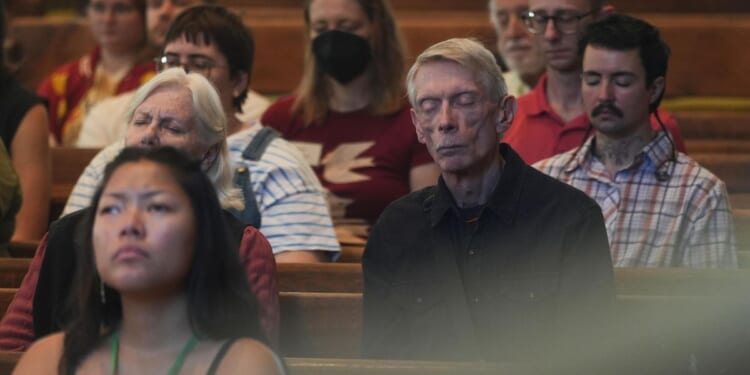
Don’t miss the full story, whose reporting from Luis Andres Henao at The Associated Press is the basis of this AI-assisted article.
Young people are flocking to Philadelphia’s historic Arch Street Meeting House in unprecedented numbers, seeking refuge from modern chaos in the silent worship and social justice traditions of Quakerism, with attendance surging from 25 before the coronavirus pandemic to up to 100 today.
Some key facts:
• Attendance at Arch Street Meeting House has grown from about 25 people before the pandemic to up to 100 today, with the majority being young people.
• Quaker worship involves sitting in silence without clergy, pulpits, altars, music or rituals, waiting for messages from God to move through them.
• The Arch Street Meeting House, built in the early 19th century on land donated by William Penn, is known as the “Westminster Abbey of Quakerism” and remains one of the world’s largest active meeting houses.
• Quakers have a long tradition of peaceful activism, historically protesting wars and slavery and supporting women’s voting rights.
• The Religious Society of Friends was founded in 17th-century England by George Fox, who taught that the Inner Light emancipates people from adherence to creeds and rituals.
• There are an estimated 400,000 Quakers worldwide, with about half living in Africa, mostly in Kenya.
• Hazele Goodrich serves as the first Black clerk in Arch Street’s 200-year history.
• Quaker values are known as SPICES, representing Simplicity, Peace, Integrity, Community, Equality and Stewardship.
READ MORE: Young adults turn to Quakers’ silent worship to offset — and cope with — a noisy world
This article is written with the assistance of generative artificial intelligence based solely on Washington Times original reporting and wire services. For more information, please read our AI policy or contact Ann Wog, Managing Editor for Digital, at awog@washingtontimes.com
The Washington Times AI Ethics Newsroom Committee can be reached at aispotlight@washingtontimes.com.










